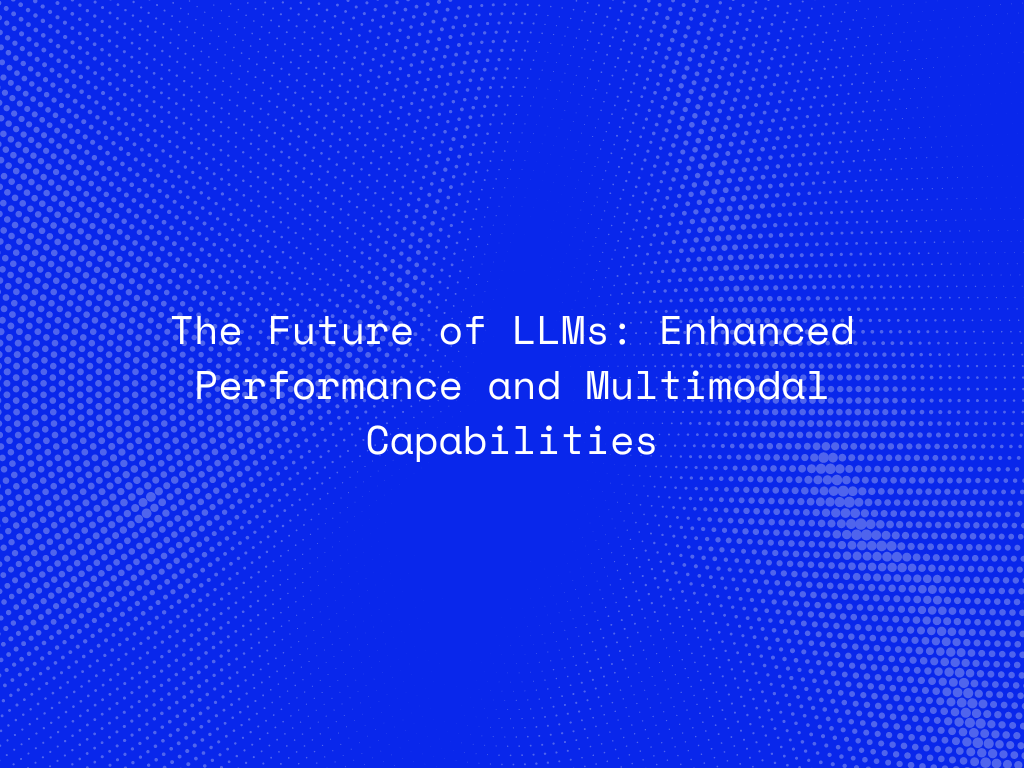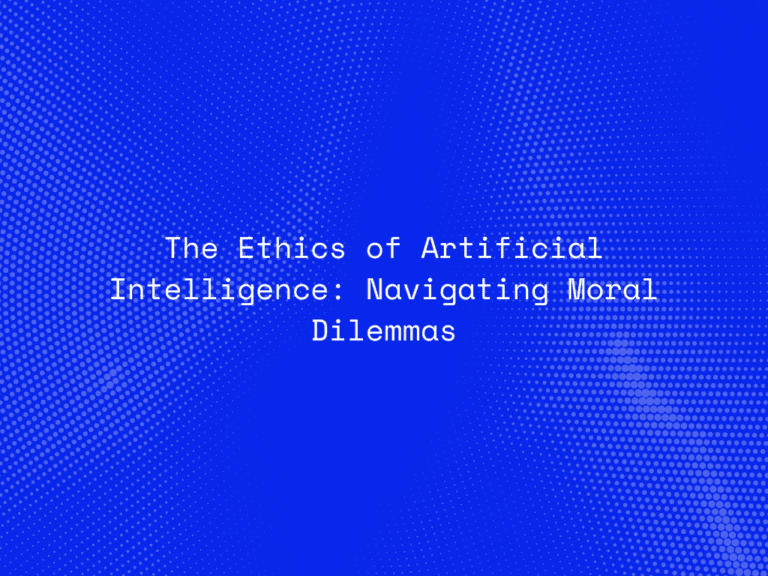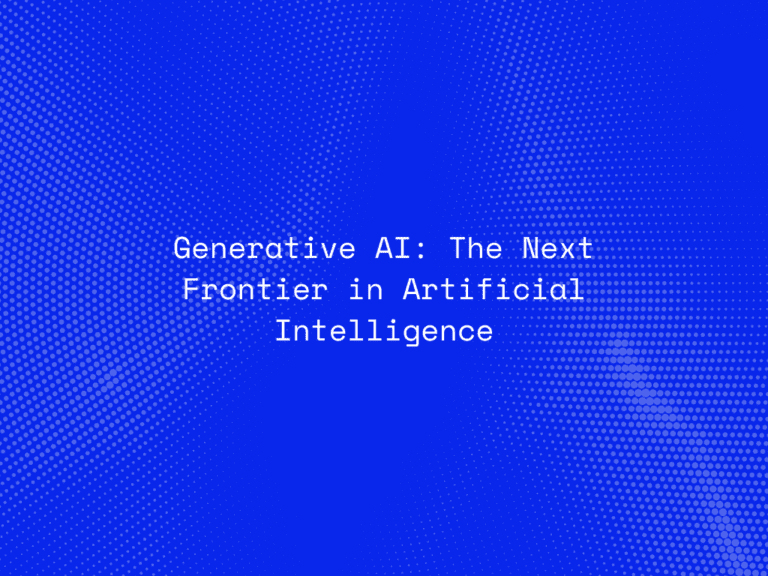The evolution of Large Language Models (LLMs) is driving a new era of artificial intelligence, marked by breakthroughs in natural language processing (NLP), machine learning, and multimodal AI. As LLMs continue to grow in size, complexity, and capability, they are becoming more adept at solving complex problems, generating human-like text, and even understanding and interacting with multiple types of data—text, images, audio, and video.
This blog explores the future of LLMs, highlighting the expected improvements in their performance, the rise of multimodal capabilities, and the potential applications of these advances across industries.
The Evolution of Large Language Models
LLMs like OpenAI’s GPT series, Google’s BERT, and Meta’s LLaMA have revolutionized the way machines process and understand language. These models are pre-trained on vast datasets, using billions (or even trillions) of parameters to generate coherent, contextually accurate text based on user input.
While current LLMs are already powerful, their performance is expected to improve dramatically in the coming years as researchers focus on scaling models efficiently, enhancing training techniques, and introducing multimodal capabilities that integrate various forms of data input.
1. Enhanced Performance: Toward Efficient Scaling
One of the most notable trends in the development of LLMs is the focus on enhancing their performance through efficient scaling. Instead of simply increasing the number of parameters, which can be computationally expensive, researchers are exploring new ways to improve model performance while maintaining efficiency.
Key Trends in Enhancing LLM Performance:
- Parameter Efficiency: Researchers are working on making LLMs more efficient by developing smaller, more focused models that can achieve high performance without the need for billions of parameters. This trend is driven by the realization that larger models are not always better—smaller, more specialized models can outperform giant LLMs in certain tasks, particularly when fine-tuned with domain-specific data.
- Knowledge Distillation: This process involves transferring knowledge from larger models to smaller, more efficient ones without compromising performance. It allows for the creation of compact models that can perform well in real-world applications, even on resource-constrained devices like smartphones or embedded systems.
- Training Techniques: New training techniques, such as contrastive learning and self-supervised learning, are making LLMs more effective at understanding context and generating more accurate results. These techniques help models learn deeper relationships between different pieces of data, improving their ability to generate relevant and coherent responses.
- Improved Fine-Tuning: Fine-tuning LLMs on specific datasets or domains can dramatically improve their performance in specialized areas like legal, medical, or financial fields. Future LLMs will likely feature enhanced fine-tuning capabilities, making them even more adaptable to niche applications.
2. The Rise of Multimodal Capabilities
The next frontier for LLMs is the development of multimodal AI—systems that can process and generate outputs across various data types, such as text, images, audio, and video. While current LLMs primarily handle text-based tasks, future models will have the ability to understand and synthesize information from multiple modalities, paving the way for more natural and interactive AI experiences.
Key Developments in Multimodal AI:
-
Vision-Language Models: Models like OpenAI’s CLIP and DALL-E have already begun combining visual and textual data to create compelling results, such as generating images from text prompts. Future LLMs will further integrate vision and language processing, allowing AI to not only generate content but also to understand and interpret complex visual data in conjunction with text.
-
Example: In healthcare, multimodal AI could analyze medical images (like X-rays or MRIs) alongside patient records to generate more accurate diagnostic reports or treatment recommendations.
-
Audio and Speech Recognition: As LLMs become more multimodal, their ability to process and generate audio will improve, leading to more advanced speech recognition systems, text-to-speech (TTS) applications, and voice assistants. This will result in smoother, more natural interactions between humans and AI-powered systems.
Example: Future AI assistants will not only respond to text or voice inputs but could also analyze the tone of voice, background noise, and context to provide more relevant and nuanced responses.
-
Video Understanding: Integrating video processing capabilities with LLMs opens up a range of possibilities for video understanding and content generation. Future models could analyze video content, summarize key moments, or even generate new video clips based on textual descriptions or prompts.
Example: In marketing, multimodal AI could generate targeted video advertisements based on a combination of user behavior, preferences, and real-time feedback, creating more personalized and engaging content.
-
Cross-Modal Learning: Multimodal models will excel in cross-modal learning, where they can transfer knowledge from one modality to another. For instance, an LLM could use insights from visual data to improve its language generation capabilities, or vice versa, making it more versatile and adaptive across different tasks.
3. Applications of Future LLMs: Transforming Industries
The enhanced performance and multimodal capabilities of future LLMs are poised to transform industries in various ways. Here are a few key sectors that stand to benefit:
Healthcare:
In healthcare, LLMs can assist doctors in diagnosing diseases, suggesting treatments, and analyzing medical records. With multimodal AI, these systems could also interpret medical imagery, patient history, and genomic data simultaneously, leading to more accurate diagnoses and personalized treatments.
Education:
Future LLMs will play a critical role in personalized learning by generating educational content tailored to the needs of individual students. Multimodal AI could enhance virtual classrooms by analyzing video lectures, providing feedback on assignments, and even generating real-time interactive tutorials using text and visuals.
Entertainment:
In the entertainment industry, LLMs with multimodal capabilities will enable the creation of immersive content, such as movies, video games, and virtual environments. AI could automatically generate scripts, visuals, and soundtracks, offering creators powerful tools to experiment with new formats and concepts.
Customer Service:
AI-powered customer service systems will become even more effective at understanding and responding to customer queries. With multimodal capabilities, these systems could analyze voice tone, interpret images (e.g., photos of damaged products), and generate personalized solutions, making interactions smoother and more intuitive.
Marketing:
In marketing, future LLMs will revolutionize how campaigns are created and optimized. Multimodal AI can generate ad copy, create visuals, and analyze customer behavior simultaneously, enabling marketers to produce more targeted and creative campaigns across multiple platforms.
Connect With Us
4. Challenges and Considerations
While the future of LLMs is bright, several challenges must be addressed to ensure their successful deployment:
- Data Privacy: As LLMs become more capable of processing sensitive data, ensuring privacy and security will be paramount. Striking a balance between using large amounts of data for training and respecting individuals’ privacy rights will require robust policies and technologies.
- Bias and Fairness: LLMs are prone to inheriting biases from their training data. Future models must incorporate techniques to mitigate bias and ensure that AI systems operate fairly across different demographic groups.
- Ethical Considerations: As LLMs become more integrated into critical sectors like healthcare, finance, and law, ethical considerations will become increasingly important. Ensuring that these models are used responsibly, with human oversight, will be essential to avoid unintended consequences.
Conclusion
The future of Large Language Models promises to be transformative, driven by enhanced performance, efficient scaling, and the integration of multimodal capabilities. These advances will unlock new possibilities in fields ranging from healthcare and education to entertainment and customer service, reshaping how we interact with AI in our daily lives.
However, to fully harness the potential of future LLMs, researchers, developers, and policymakers must address challenges related to privacy, bias, and ethics, ensuring that these powerful tools are developed and deployed responsibly.
As LLMs evolve into more sophisticated, multimodal AI systems, their ability to process, understand, and generate content across various data types will redefine the boundaries of artificial intelligence and unlock a future of limitless possibilities.




